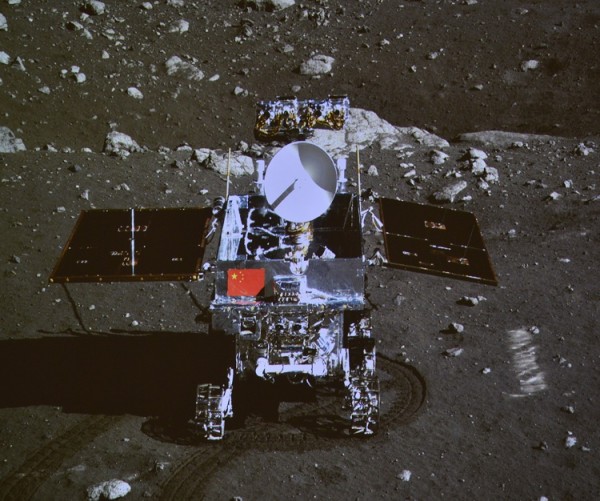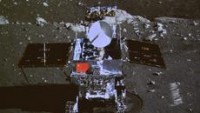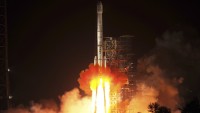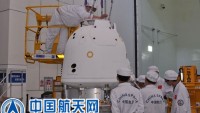China’s Rover Uncovers Moon’s Complex Layers
| Marco Foronda | | Mar 13, 2015 08:04 AM EDT |
(Photo : Reuters) The Yutu or "Jade Rabbit" lunar rover on the Moon.
China's lunar rover has mapped only 114 meters of the Moon's surface, revealing a more active and complex geological history than previously believed, according to Science Mag's report released Thursday.
Using the Lunar Penetrating Radar (LPR) detection technology and cameras, scientists found evidence the Moon has nine subsurface layers. These distinct layers have actively formed since 3.3 billion years ago, according to the report.
Like Us on Facebook
The Yutu lunar rover examined the ground and craters on the Sea of Rains site, including an odd rock called "Loong." From the data gathered, scientists suggested the later part of the Moon's volcanic history was highlighted by more volcanic eruptions than previously thought.
Yutu also discovered the volcanic plain consists of explosive pyroclastic rocks besides basaltic lavas, said Long Xiao of China University of Geosciences.
This discovery led them to conclude the site's composition was different from the sites studied by Soviet Union's Luna program and NASA's Apollo missions.
These findings were probably among the last discoveries of China's first Moon rover as it encountered a glitch and died in January 2014, reports said.
"No more data will come," Xiao confirmed.
The team has yet to release data gathered by the Active Particle-Induced X-ray Spectrometer (APXS) and Visible Near-Infrared Spectrometer (NIS), the other two of the three main instruments carried by Yutu.
The Yutu lunar rover landed on December 14, 2013 on the site near a 250 meter wide crater, called C1, which was formed between 27 million to 80 million years ago after a cosmic impact.
It zigzagged on the lunar surface, covering a total distance of 114 meters before it broke down a month after it arrived on the Moon.
Yutu is part of China's Chang'e 3 lunar mission whose soft touchdown on the moon's surface was the first since the Luna 24 program in 1976.
Tagslunar rover, moon, Chang'e-3, Long Xiao
©2015 Chinatopix All rights reserved. Do not reproduce without permission
EDITOR'S PICKS
-

Did the Trump administration just announce plans for a trade war with ‘hostile’ China and Russia?
-

US Senate passes Taiwan travel bill slammed by China
-

As Yan Sihong’s family grieves, here are other Chinese students who went missing abroad. Some have never been found
-

Beijing blasts Western critics who ‘smear China’ with the term sharp power
-

China Envoy Seeks to Defuse Tensions With U.S. as a Trade War Brews
-

Singapore's Deputy PM Provides Bitcoin Vote of Confidence Amid China's Blanket Bans
-

China warns investors over risks in overseas virtual currency trading
-

Chinese government most trustworthy: survey
-

Kashima Antlers On Course For Back-To-Back Titles
MOST POPULAR
LATEST NEWS
Zhou Yongkang: China's Former Security Chief Sentenced to Life in Prison

China's former Chief of the Ministry of Public Security, Zhou Yongkang, has been given a life sentence after he was found guilty of abusing his office, bribery and deliberately ... Full Article
TRENDING STORY

China Pork Prices Expected to Stabilize As The Supplies Recover

Elephone P9000 Smartphone is now on Sale on Amazon India

There's a Big Chance Cliffhangers Won't Still Be Resolved When Grey's Anatomy Season 13 Returns

Supreme Court Ruled on Samsung vs Apple Dispute for Patent Infringement

Microsoft Surface Pro 5 Rumors and Release Date: What is the Latest?













